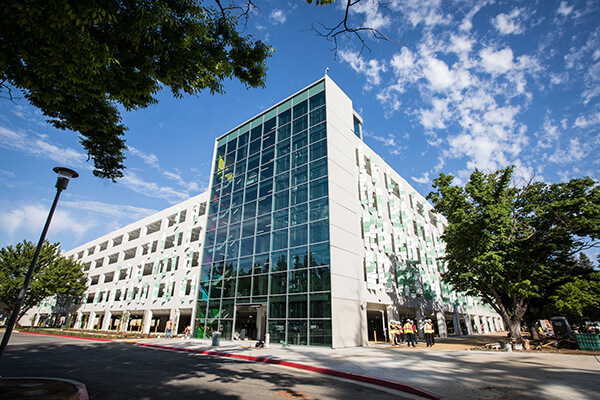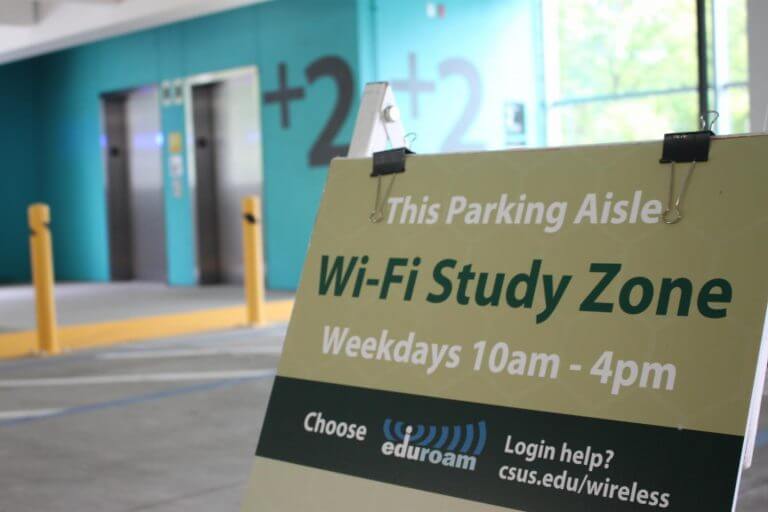May 18, 2020 By BlueAlly

By Ted Koubiar, Senior Director of Operations and Network Services, California State University, Sacramento

(Photo Credit: Sacramento State/Jessica Vernone)
At the beginning of March, when California was in the early stages of realizing the full impact of the COVID-19 pandemic, we had already begun plans to transition to virtual learning at Sacramento State. However, given the diversity of our students, and their varied living situations, we knew that delivering classes online would only work if all of our students could access them.
In addition to obtaining and providing students with laptops, web cameras, headsets, and microphones as needed, we also considered ways to supply the Wi-Fi connectivity required for using them. Although our approximately 230 remaining students in the residence hallscould continue using our existing Wi-Fi, eduroam, the trick was providing access to the tens of thousands of off-campus students we serve – many who may not have a reliable in-home solution.
Rolling out drive-in academic access in a matter of days

Fortunately, our new six-floor parking structure provided us with a solution. We determined that we could deploy Wi-Fi on floors 2-6 by leveraging the existing telecom closets on those floors. Then, students could drive up to a designated parking spot and access online courses securely using their Sacramento State eduroam credentials.
Setting up a new Wi-Fi access area required cross-departmental cooperation, and we worked closely with University leadership, the transportation & parking department, and the campus police department to complete the project. Together, we considered the various academic, technical, procedural and safety aspects of offering students Wi-Fi in a parking facility during a pandemic. It was imperative that we not only supply high-performance wireless access, but also an appropriate and safe environment for students to use it.
Once we’d established the Wi-Fi technology details, we consulted with our Aruba field engineer. He reviewed our AirWave mappings to ensure our plans followed all of the necessary guidelines and met the required specifications. Then we used our existing inventory of Aruba’s outdoor AP’s to deploy the solution.
From the time our University president called for transitioning to online courses, to launching our new access location, it took us just over two weeks. This included devising rules and policies, creating signage for directing students to coverage areas, and implementing public safety patrols during the hours of operation, which are currently weekdays from 10 a.m. to 4 p.m.
On March 27, 2020, the first students began accessing their courses via the new drive-up Wi-Fi location. It’s been used steadily ever since, serving about 100 users a day.
Providing a safe connectivity space to support ongoing student needs
As the ongoing impacts of COVID-19 are yet unknown, we’re pleased to offer this connectivity option to our students for as long as they need it. Should we need to make changes, our Wi-Fi infrastructure ensures we’re nimble enough to do so.
Moving forward, we may even make the offering a permanent feature for supporting and improving student success, based upon the feedback we receive on student surveys over the weeks and months to come.